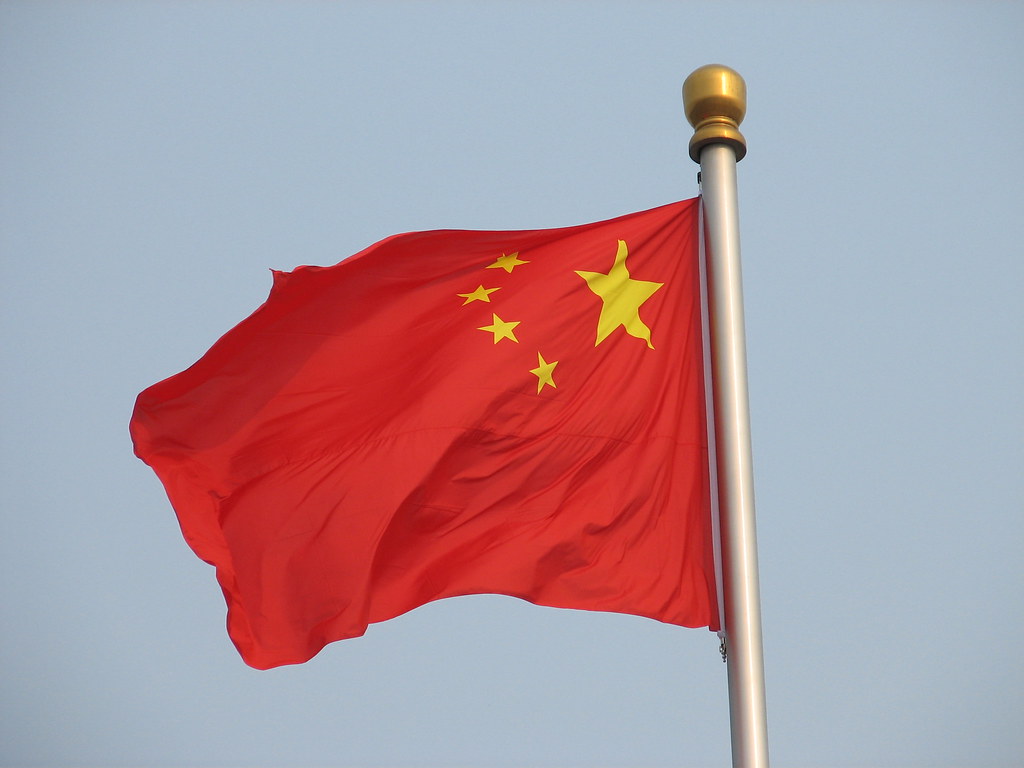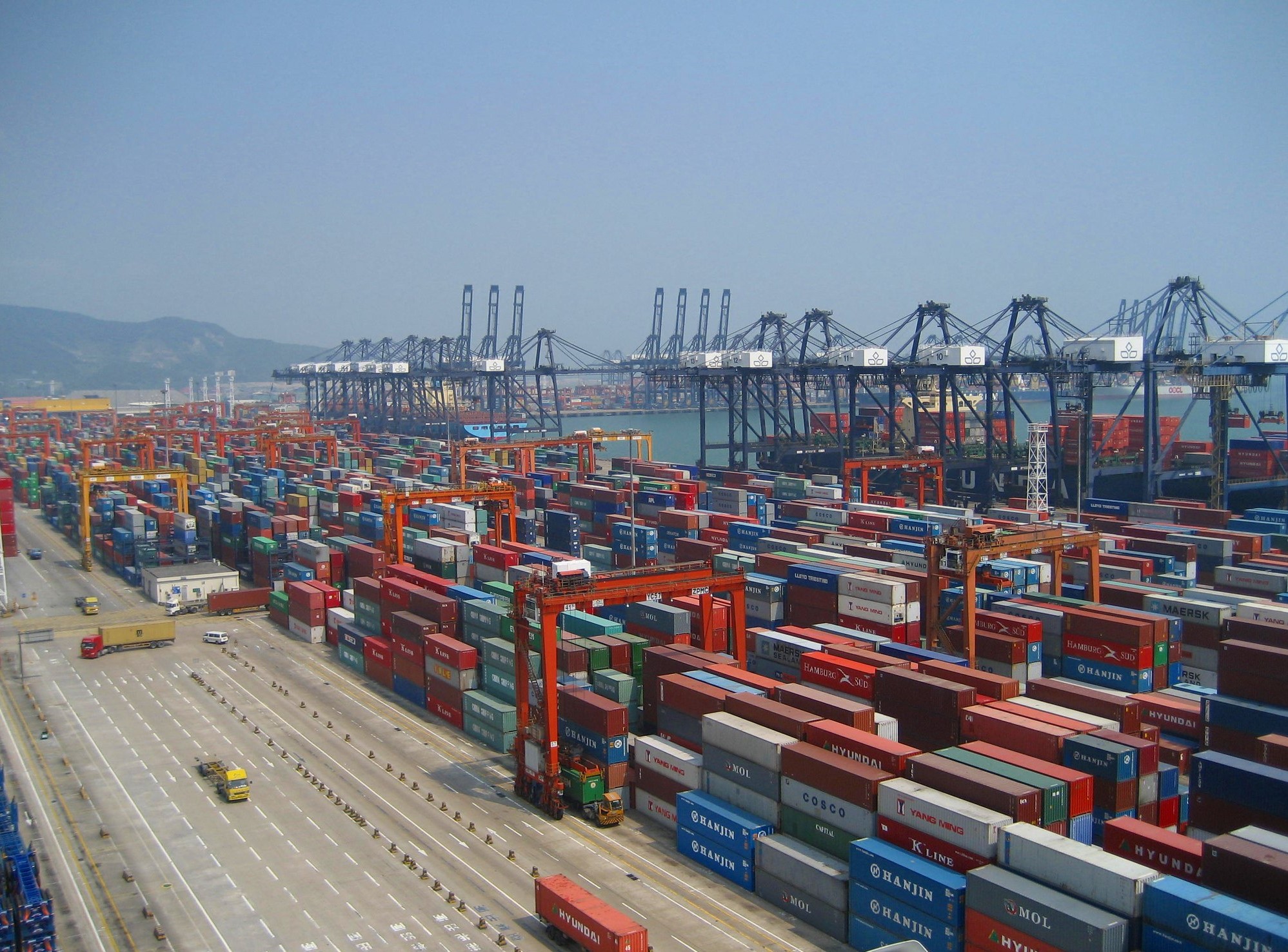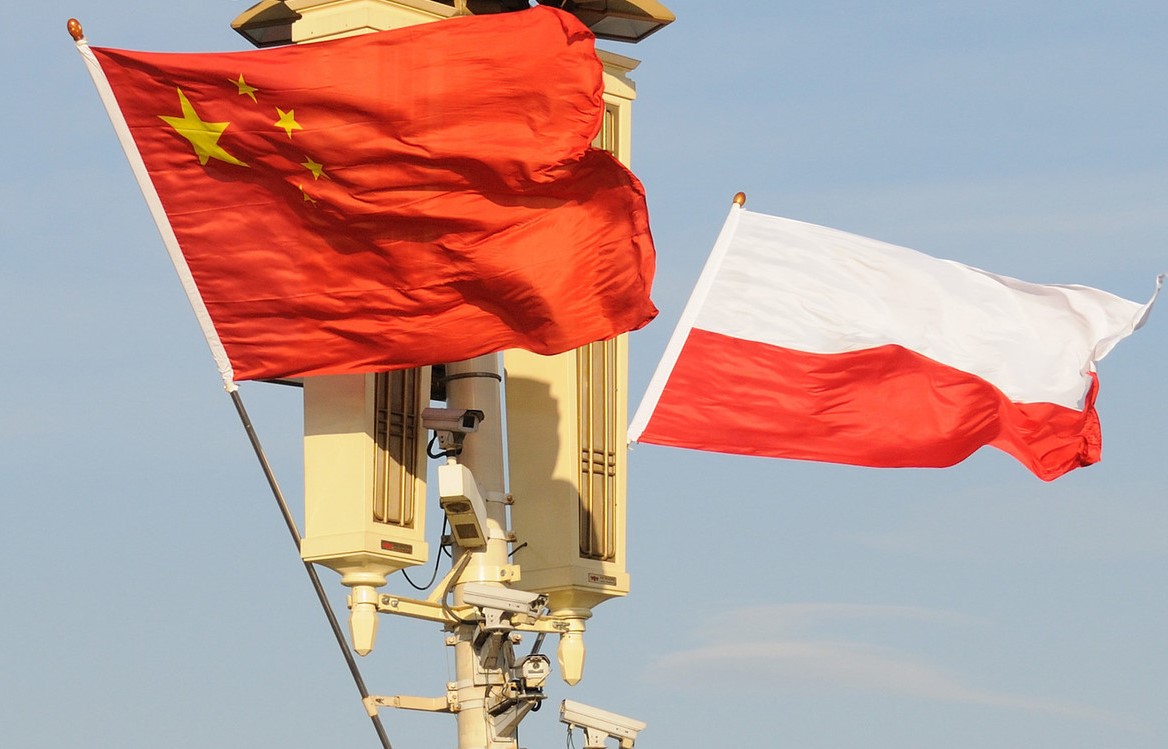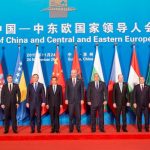SPECIAL REPORTS
Date: 18 December 2019 Author: Jacek M. Raubo, Ph.D.
Dilemmas of Chinese Presence in Central and Eastern Europe
Chinese presence in Central and Eastern Europe is part of the country’s broader policy toward the whole continent while fitting into Beijing’s possibilities to exert influence on what so far has referred to as the Western world. Contrarily to what Russia is doing, Chinese activities are way more hidden and fall neatly into an adequate narrative. Therefore, it is somewhat challenging for Europe to devise a homogenous response, a move that needs a proper reaction from some states, either in the form of bilateral relations – as with the United States – or as part of regional ties.
- In the vanguard of Beijing’s strategic interests are its activities aimed at bringing European businesses close to Chinese partners, by opening up some opportunities to operate on Chinese soil. The very same can be said today about heightened expansion of Chinese-based firms and their broad know-how to conquer Europe on the different levels of economy, business and technology and in partnership with governments and privately held entities all across the region.
- China has for years made targeted efforts for building its image of an alternative political and business hub, far from Russia’s new expansionist policy and the U.S. ambitions on the continent, yet focused chiefly on nurturing commercial ties. Meanwhile, albeit somewhere in the background of its core activities, Beijing has striven to promote its culture, language and tourism in a bid to advance a positive image of China abroad.
- Recent years have seen the growth in Chinese intelligence activity outside the country’s borders, which is essentially in Central and Eastern Europe, as part of Beijing’s strategy to safeguard its strategic interests, both in the context of its ties with individual states and throughout the entire region. This encourages greater possibilities of China’s foreign policy that sees the country’s intelligence agencies as a vital tool for collecting data that is most often used to back some projects in areas like politics, business and culture.
 Source: Philip Jägenstedt/FLICKR.COM
Source: Philip Jägenstedt/FLICKR.COMINTRODUCTION
Present-day China does not remain idle in the face of further development of opportunities and takes multifaceted action on the global scale, stretching from politics to its activities in the information space. The latter, however, resonates loudest in Asia, Africa, or both Americas, often as long-term projects, especially that the United States is emerging as China’s biggest world rival that aspires to maintain its advantage worldwide. Yet it cannot be denied that Europe –– particularly its western regions that have at their disposal internal market, technology-related capabilities and still a dominant position worldwide –– is and will be a vital element of Chinese strategies devised to extend Beijing’s zone of influence, or China’s move towards becoming a superpower.
That said, Chinese presence is perpetuating itself also across the region that seems to interest us most, which is Central and Eastern Europe, though never before was it high on Beijing’s list of priorities. What is particularly apparent is that China, when taking actions in Europe (in the broadest sense), adopts a highly flexible approach to countries and their features, as well as it is capable of concealing its own goals and tools it uses to accomplish them, though to some extent.
This is thus a vital issue to notice how specific is the Chinese apparatus, or a mechanism that can emerge as a source of challenges to our region. It is critical to formulate somewhat a set of recommendations for the countries of the area as these are growing more and more inclined to deliver an effective response to Beijing’s ever-growing authority in their strategic space. Furthermore, Chinese efforts are coinciding with those of Russia, or yet another critical actor to orientate its goals toward Central and Eastern Europe, primarily in the areas like security and defense.
 An electronics factory in Shenzhen, China. Source: Steve Jurvetson/WIKIMEDIA COMMONS
An electronics factory in Shenzhen, China. Source: Steve Jurvetson/WIKIMEDIA COMMONSA COUNTRY WITH GLOBAL ASPIRATIONS, YET REMAINING IN THE SHADOW
21st-century China no longer conceals its ambitions to challenge the United States in almost every area of rivalry. What should be noted is that recent years have brought an end to China’s persistent push for strengthening its potential, albeit without a clear-cut response from the world’s biggest political players. This all happened due to significant changes in the global order based on the rules and norms established in the 1990s, back when the focal point was on full globalization, a determinant of post-Cold War relations, when countries did not compete one another but entered into cooperation to win an advantage. Also back then, security challenges were chiefly defined by global and non-state actors, which was the growing activity of non-state entities like terror groups. Furthermore, despite the existing limitations on arms exports and dual-use military technologies, China got an invitation to participate in a new dynamics of global economic shifts. The People’s Republic of China emerged back then as an evident beneficiary of what happened, with its reputation by no means tarnished by the violent quelling of the riots in Beijing’s Tiananmen Square.
Yet recent years have seen the weakening of the attention attracted by the Western world (North America, Europe, Australia, New Zealand, etc.) to the phenomena like terrorism or “failed states,” which refers to an asymmetrical relation between the state and non-state entities in a move that allowed China’s global activities to be distinguished. Moreover, what Russia did in Georgia, and chiefly in Crimea and Ukraine’s eastern regions, has de facto shifted the focus to what served as the typical foundations of relations between states and how they saw themselves in confrontation with the world’s mightiest countries. Perhaps contrary to what some may think, this was first and foremost Moscow’s activity that somewhat restrained China’s possibility to develop its camouflaged potential. States have begun to notice problems such as conventional armaments, the need to form a kind of digital sovereignty, or the requirement to put in place some mechanisms to combat espionage threats that are as serious as they would be in the Cold War era.
Expansion of China’s political, cultural, military and economic threats has therefore surfaced in recent years as a critical challenge or even a danger posed to the interests of other key actors worldwide. This affected most the United States that outlined a strong political and diplomatic stance, followed by economic and military reactions, especially after President Donald Trump took office. Notwithstanding this, many European states included both the socio-political debate and the emergence of distinct opinions over China’s presence into their agendas. Their move stemmed from the growing step-up of Chinese technologies onto European markets, coupled with the emergence of Chinese-source capital financing.
We are therefore witnessing what could be dubbed a struggle for a new image of the People’s Republic of China worldwide. It is hard to suppose that Beijing will eventually forsake its plans to dynamically increase its capabilities on a global scale, with the economy being in the very nub of its ongoing efforts. Also, the present-day People’s Republic of China serves as an exact point of reference for what is currently taking place both regionally, in the Asia and Pacific regions, and globally in areas like politics, military, culture and, perhaps most importantly, business, finance, research, science and economy. Beijing has at its disposal the same apparatus for exerting influence on other countries, international institutions and societies. Moreover, having in mind the experience of recent years, the People’s Republic of China has made skillful attempts to find the balance between tools it had utilized to disseminate both its hard as well as soft power solutions.
 Belt and Road International Forum. Source: KREMLIN.RU
Belt and Road International Forum. Source: KREMLIN.RUSTRATEGIC CHINESE PRESENCE
There is no doubt that Chinese investments in Central and Eastern Europe, as well as Beijing’s direct economic cooperation with these countries, have stirred up political and economic debate, both nation and region-wide. However, it is worth asking whether the increasing presence of Chinese capital, companies, and, last but not least, technological solutions, poses a grave security threat to the region. Or perhaps, quite the contrary, this should be perceived as a fresh opportunity to bolster both the political and economic status of some countries as new global relations are being shaped.
Furthermore, suffice it to say that the problem mentioned above requires something more than just an economic insight. This, of course, has been carried out for a long time, with these considerations fitting into research interests of financial analysts, among others. But what needs to be noticed is the emergence of a never-before-seen political and social space that until then had not popped out in these countries’ relationship with the People’s Republic of China. With a new generation of political disputes –– both regional and global –– comes an uptick in the importance of political and domestic factors in defining present-day economic relations. This is especially true for the Chinese political system, quite a peculiar one, where state interests are closely linked to the business ones.
What should not be neglected is that Beijing’s ongoing struggle for shaping its new picture worldwide concerns the whole Central and Eastern Europe area, where China is making intensified efforts to build its multifaceted presence, mainly due to the tools it has. Beijing’s endeavors apply to the fields such as culture (a network of Confucius Institutes), economy and finance, illustrated by the activity of Chinese companies or by including countries like Poland in Chinese-sourced financial initiatives, diplomatic, intelligence or scientific, the last of which encompasses companies that offer comprehensive access to the latest ICT products and services. Meanwhile, Poland’s geographical location overlaps with where China hopes to see its strategic plans, mainly by creating shipping lanes to Europe that bypass the already-existing sea routes, all of which controlled by the United States and its allies. In doing so, Beijing seeks to win access to new markets across Western Europe. And all this comes regardless of an attitude to the present-day discussion over the role of geopolitics in shaping global relations. This is for purely pragmatic reasons. It is therefore worth centering attention not to the existence of China’s strategic interests in this European region, but how they will be formed in the ensuing years. In the face of growing political clashes between Western Europe as well as Central and Eastern Europe, the United States and Europe, as well as Russia and Europe, the People’s Republic of China might spot a chance to conquer new areas.
 Container port in Shenzhen, China. Source: Bert van Dijk/FLICKR.COM
Container port in Shenzhen, China. Source: Bert van Dijk/FLICKR.COMCHINA’S “MULTITOOL” STRATEGY
Present-day China enjoys the comfort of accomplishing its goals in the Central and Eastern Europe area because it is capable of formulating its objectives in relation to multiple countries that see Chinese activities differently. For example, Hungary’s government shows what could be branded as the articulation of friendly, or even strategic ties with the People’s Republic of China. What resonates out in the Czech Republic are Chinese intelligence efforts in a move that somehow forewarns Beijing against any other issues between the two countries. Poland, for its part, has pulled out of a number of joint undertakings with the People’s Republic of China, a result of a bilateral rapprochement with the United States. To advance its interests more successfully, Beijing must fall back on the following two strategies, as generalized and specified below.
Method 1: Creating the image of both enduring and inquestionable double-track business ties in some countries, or becoming familiar with the PRC’s strategy.
There has recently emerged in the region a well-marked tendency to independently seek business partners in the People’s Republic of China. China has aptly solidified its image of a vital economic partner in a bid to lure a group of entrepreneurs, the image that is now targeting citizens and consumers, mostly thanks to the ever-expanding online shopping networks. This is all despite, too, consumers who tend to deprecate any goods labeled as “Made in China.” Both business circles and clients have become acquainted with the People’s Republic of China being an inherent part of their activity in the commercial space in a move that grounded Beijing’s belief in its powerful capabilities.
Hence, China’s activity gets endowed with a kind of a two-way relationship, embedded at the state and regional levels with Beijing’s initiatives in the region, mostly through its drive to develop connectivity strategies (New Silk Road/Belt and Road Initiative). Similarly, the People’s Republic of China targets relations between states –– by nurturing bilateral diplomatic ties and exerting political pressure –– state and society, with Beijing’s efforts to forward cultural and linguistic projects, chiefly through the global network of Confucius Institutes and student exchanges, as well as tightening relations between societies, built on grassroots business initiatives. Taking a 2019 standpoint, we should recognize that there is neither possibility nor socio-political will, far different than the one of the United States, to cut off all regional ties with Beijing, either entirely or to a significant extent. This may be true at least when it comes to a rapid decision that could be quickly delivered, even in the case of a broad and deep relation with the United States, a country that has a growing impact on interstate relations, like those between China and Poland. The Chinese economy has been integrated so much into the global market, while its indirect ties to the region that can by no means be underestimated, or at least such was the image, with Beijing emerging as the biggest beneficiary. It is worth emphasizing that this picture conveys a massive propaganda effect as it neglects the very essence of political debate with Beijing: human rights, freedom of religious belief, as well as Tibet and China’s treatment of the ethnic minority of the Uighurs.
Method 2: Using the region’s and the whole of Europe’s internal diversity, or China employs a U.S.-like strategy
The People’s Republic of China was right to notice that Europe was subject to a similar rule to the one that the United States had developed for years, as part of which Washington sought to play up some European countries in a strategy that allowed to achieve political or economic goals under a far more bilateral approach. And yet the mere recognition that the People’s Republic of China has established a marked network of relations between Beijing on the one hand and Poland and its region on the other, way more far-reaching than what stems from economic data, should not downplay the debate over the pros and cons of the Beijing-based system. As it is the case of countries located closer to the People’s Republic of China like Australia or Japan, the focus should be first and foremost on a pragmatic approach to the most severe threats. Once accurately delineated, these will be easier to be tackled with customized tools and well-rationalized blueprints, especially if these two solutions are to be in place for longer. The long-term dimension of this strategy is critical because the People’s Republic of China is a superpower that flaunts its long-term plans allowing it to sketch a policy toward the rest of the world.
 One Belt, One Road. Source: Lommes/WIKIMEDIA COMMONS
One Belt, One Road. Source: Lommes/WIKIMEDIA COMMONSIt is worthwhile to note a few lines in China’s official narrative, both skilfully played up, which allow practical use of the two modes of Beijing’s activities across Central and Eastern Europe:
- The feasibility to conquer new markets across a country that is both seen as developing, receptive and endowed with a superpower status, provided that friendly ties with the People’s Republic of China are kept. What has for years stood as the top argument in favor of the growing importance of relations with Beijing is the absorption capacity of China’s sales market. Indeed, the marketization reforms, which started in the late 1970s under President Deng Xiaoping, transformed Chinese society as planned by the local authorities to provide the country with some fresh economic and trade capabilities. Furthermore, China’s economic efficiency grew faster than the country’s military enlargement. Companies from Poland and across the region eye the opportunity to take part in the process of enrichment of a power-oriented society as yet another incentive to shift the focus to the Chinese market. As for economic-related actions, it is worthwhile noting that these were immediately disconnected from any political issues. Hence, China’s business image was devoid of any contentious issues that emerged in what could be named as the socio-political debate: Tibet, Taiwan, the presence of the Roman Catholic Church in China, or Beijing’s policy towards the Uighurs. The fact is that many European businessmen have in recent years made attempts to build business ties with China-based entrepreneurs while neglecting politics and diplomacy. It is therefore highly advised to remain cautious and eye Beijing’s image in terms of a particular strategy devised by the Chinese authorities. Although exposed to a set of internal threats, along with a speculative bubble in the housing market, the Chinese domestic market may indeed offer numerous opportunities for cooperation. It should be assumed at the same time that companies across China, additionally aided by the state, would push for consuming its domestic economic success to the greatest extent possible. Suffice it to note how specific trade relations Russia and China maintain within the sphere of military technologies. The former country perceives the latter’s market as somewhat necessary, if not the key one, while identifying China’s push for eventually becoming independent in this area. In doing so, Beijing strives to take advantage of a wide range of Russian-made technologies, yet appropriately modified to develop its own capabilities. Similar processes are and will be sure to go far beyond the military industry, which is why it is worthwhile to confront strategic considerations over what the Chinese market can with the country’s growing strength.
- The possibility of entering into long-term cooperation with Chinese partners that could pertain to a wide range of mutually profitable initiatives in areas like economy or science all around the world. As was the case with reaping benefits from the enrichment of Chinese society, the possibility of collaboration in areas like economy or science outside the Asian country is chiefly oriented on both short and medium-term positive goals. The Chinese make practical efforts to be allowed the ability to handle their contacts worldwide through a network of both economic and technology-related dependencies. This is of utmost importance in the case of the asymmetry of power and means, because if the United States can embark on a hard reset of these reliances, any countries being fully receptive to technological, scientific and economic cooperation may no longer be free to follow suit, especially if the urge to build mechanisms to stop or control China’s ongoing expansion is at stake. Neither is it conceivable, nor will it be adequate to cut off any ties to the People’s Republic of China in domains like economy, technology, research, or science, especially given that Beijing has accelerated the development of high-tech industries.
- The feasibility to take advantage of ties to the People’s Republic of China as part of a strategic game with other actors worldwide. There has emerged a strong suggestion that China should potentially be used somewhat as a balancing mechanism in the struggle between top players in Europe and worldwide (e.g., the United States, Germany, Russia, France and others), notably in spheres like the economy, finance, science and technology. This is particularly valid in the context of the fostering technological or economic sovereignty. But what is the critical challenge for Poland and the region is the undermining the institutions of the European Union and NATO –– the two pillars of the country’s security shield. Any links to the People’s Republic of China, including the economic ones, should be fitted into a broader setting, such as the military one. It is primordial to perceive the competition in the Asian market as a potentially strategic factor for European defense as well as to notice that Europe will, witness a debate over Chinese-developed technologies in the domains like security or defense, albeit in the long-term perspective. Furthermore, it is opportune to suppose that the People’s Republic of China would admit a strong NATO on its plausible trade routes, which is why the bloc’s fragmentation is in China’s interest. At the same time, it is light years easier for China to do business and implement its strategic and long-term agenda towards some European countries in a move that prompts an enormous asymmetry of power and means, noticeable even in China’s ties with Germany. Therefore it is inaccurate to regard a strong EU position as what Beijing considers the ideal solution.
 Source: pxhere.com
Source: pxhere.comSECURITY DOUBTS AROUND CHINESE EXPANSION
What should be delved into in this part of the paper is a handful of fundamental security challenges that could hold close links to China’s relations to the countries of the region. The following may need a further examination:
- The inaccurate perception of the features of Chinese political and legal systems, deriving from an assessment of what took place in the late 20th century while neglecting the speed of changes within China and the country’s strategic plans. This perception thus focuses on the paradigm of economic collaboration in a globalizing world. Apart from what was stated above, the People’s Republic of China pushes for winning the position of the world’s dominant power, with all of its economic undertaking having a solid political background. Washington has long been amongst those that drew the most attention to Beijing’s endeavors, directly pointing out that the authorities in Beijing first and foremost advance their interests while countries like Poland are or may be just an element of the game.
- The fact of distinguishing mass-scale espionage within scientific and technical intelligence (S&TI) of the People’s Republic of China. This applies both to macro goals (pertaining to countries as well as scientific and economic sectors) and to some smaller structures. Chinese special services belong to the world’s top class in terms of personnel as well as technology used and money spent. Furthermore, they set short, medium and, most importantly, long-term goals that remain closely linked to the state’s strategic objectives. Thus if any country is sailing close to Beijing or receives a great deal of attention, for instance, due to its proximity to China, it needs to grow aware of increased Chinese intelligence activity.
- Observing how political reliance could be built through a network of economic dependencies. The People’s Republic of China is successfully running its brand-new policy towards some countries in Africa and Asia, with investments being at the vanguard of Beijing’s expansion. Nonetheless, with large Chinese companies comes political pressure, especially that the economic factor will be followed by the cultural one. China will make its best efforts to build its brand among local societies and install an information apparatus shortly after, similar to the one already operated by Russia. China might also play up Europe’s internal fractures and resentments, along with anti-U.S. moods, all of which are embedded into China’s image of a superpower interested in economic and not political issues. This serves as nothing but a form of delusion or deliberate disinformation. Beijing harnesses its status across European countries even in reference to some contentious themes like, among others, Tibet, China’s treatment of the Uighurs, or human rights.
- Economic reliance through China’s introduction of its strong business actors to European markets. This is of critical reference to any issues pertaining to information and communications technology (ICT) and aerospace industries and perhaps will soon encompass the armament sector. Collaboration with China can also challenge the whole industry segments against the country’s domestic market. China has for years built its brands, which are in the foreground of the country’s presence worldwide, as illustrated in, perhaps primarily, the rollout of the fifth-generation (5G) telecoms network or the rapid growth of ICT-related products and services, including all the relevant software and hardware. Large companies open up a country to Chinese presence, while smaller business follows suit by taking control of those segments that fail to arouse the interest of megacorps. A similar tendency can be observed in the domain of advanced security systems (cameras, video surveillance systems as well as for data processing), with smaller companies becoming more and more present in Poland in addition to two Chinese telecoms giants. This ties Polish brands closer to their Chinese peers while giving the former less room for maneuver and deepening their reliance on both hardware and software solutions.
- The emergence of long-term political friction over potential Chinese trade routes to Europe. What should be recognized today is that the People’s Republic of China is one of the determinants for NATO’s northern and southern wings. Although much of the focus is on the challenges posed by Russia and Turkey, though the latter to a slightly lesser extent, it is the People’s Republic of China that should arouse a greater interest. Thus, Beijing should be assumed to pursue its policy while having recourse to economic tools and not only diplomacy or intelligence so as to hamper the bloc’s ability and play for the widening chasms between the EU Member States.
 Source: WIKIMEDIA COMMONS
Source: WIKIMEDIA COMMONSTOOLS TO COUNTER NEGATIVE FACTORS OF CHINESE PRESENCE
- The need to form structures for framework analysis of China’s Once established, these structures should embrace analytical teams made up of government and intelligence officials and to include non-state actors: think tanks and academic centers. Such efforts will give rise to the analytical depth necessary for taking political and economic decisions. Adequate measures would enable to counteract, among other things, the expansion of Chinese lobby across Europe, both through official channels, like diplomacy, or their quasi-official counterparts (the network of Confucius Institutes, sponsored trips or scholarships in China).
- Offering more generous support for the country’s own research and scientific industries in their necessary technological cooperation with the People’s Republic of China. Once taken, such steps will allow going beyond the simplified relation between a technology supplier and recipient and to supplement it with a final element tasked with controlling the quality of technologies provided. And in the ensuing years, the People’s Republic of China will become one of the leaders of the technology boom; hence, it is both challenging and somewhat pointless to cut off ties to Chinese-based firms. Nonetheless, collaboration in areas like industry or technology should be pursued within clear-cut boundaries and with necessary tools to ensure proper national transparency standards.
- Conducting information activities to build awareness amongst entrepreneurs and consumers of what cooperation with Beijing may offer. This will enable to no longer view China through the prism of economic factors, like capital or collaboration with Chinese-based entities, by raising the possibility to grasp the political factor. Any attempts like those consist in making any efforts to gradually stamp out the stigma surrounding the narrative on China’s treatment of Uighurs and Tibetans as well as human rights and religious freedom. They all deem pretty tricky to grasp in a full socio-political debate to the benefit of issues better understood by Central and Eastern European societies and adapted to local conditions. This could be achieved, for instance, through references to a discussion over what China is doing for regional industry and the country’s possible recourse to take over the strategic sectors of the state, including communications, security-related technologies, or, potentially, also energy.
- Establishing an adequate counterintelligence apparatus across the countries of the region. With properly devised counterintelligence tools, any country might secure their economic interests, protect technologies and any activities in areas like science and research, with a particular focus on China and comparable to these states’ earlier response to the threats from Russian intelligence services. What is essential is to launch a debate over how the People’s Republic of China uses and will use intelligence-related mechanisms in its operations. This will naturally apply to scientific and technical intelligence, or S&TI, but also to any political and military matters, as stated in a Czech intelligence report released not so long ago. Furthermore, it is preponderant to foster awareness of how industry espionage functions at the level of business relations, thus in the absence of a well-marked state factor.
- Making attempts to foster regional ties. This is critical in the context of developing a particular model that could adequately respond to any challenges stemming from China’s expansion throughout the region. There is a need to include the issue of collaboration with China high on the agendas of regional, Europe-wide and transatlantic debates to nurture a conviction, at least at the diplomatic and declarative layers, that Beijing is not capable of playing up individual states by diversifying its tools for influences and winning contradictions between them. The more pressing the China issue becomes, the better the negotiating position of European countries will be. Of course, neither is it possible nor perhaps cost-effective to accept the whole U.S.-made narrative on China, though the proper handling of the ongoing U.S.-China spat could lead to the accomplishment of one’s own goals.
 Source: China Daily Global
Source: China Daily GlobalCONCLUSIONS FOR POLAND
Poland is at present not able to violently break off economic ties with the People’s Republic of China. And having in mind the security challenges and the urge to safeguard its long-term strategic interests, Warsaw should devise a system that could put a halt or narrow down Chinese activity. This has little to do with souring Poland’s relations with the People’s Republic of China, but instead aims to outline the interests of the Central European country while transmitting a clear political message. In practice, however, much is about showing the scope of collaboration Warsaw is eager to accept, along with that of how much room Poland could leave for Chinese-sourced economic entities while delineating zones reserved exclusively for the state. Of course, this is impossible to depict oneself from the position of symmetry of power and means. Still, the focus should be on the skillful use of the opportunities offered by both the cooperation with the European Union and stronger ties with the United States.
What this means in practice is the requirement to establish a state-run analytical resource base, with the focus on surveillance activities and processing any data that refers to Chinese policy, as was the case of Russia. Or perhaps China should be considered at the very same level as Poland’s closest neighbors, despite geographical distance. Along with this should come an explicitly articulated ability to boost Poland’s counterintelligence capabilities, particularly in a bid to safeguard the country’s economic, scientific and political matters over what could be labeled as increased Chinese intelligence presence on Polish soil.
It is highly recommended to invest into the technological potential of the country’s own industry while looking for some allied solution to nurture the state’s digital independence, or at least a certain degree of its autonomy or sovereignty. Otherwise, China, unlike its Russian peers, will take any action pertaining to new technologies and subsequent digital revolutions. Hence, collaboration with Chinese partners should rely upon the possibility to enforce a higher level of technological transparency yet under the control of Polish-made solutions.
Author:
Jacek M. Raubo, Ph.D
Academic lecturer, analyst, publicist, and international affairs commentator.
He works for the Defence24 Group and at the Adam Mickiewicz University in Poznan.
His research interests include broadly understood security and military issues and contemporary international relations.
The publication of the Special Report was co-financed from the funds of the Civic Initiatives Fund Program 2018.
The concept of analytical material was created thanks to co-financing from the Civil Society Organisations Development Programme 2019.
Selected activities of our institution are supported in cooperation with The National Freedom Institute – Centre for Civil Society Development.
All texts published by the Warsaw Institute Foundation may be disseminated on the condition that their origin is credited. Images may not be used without permission.

















